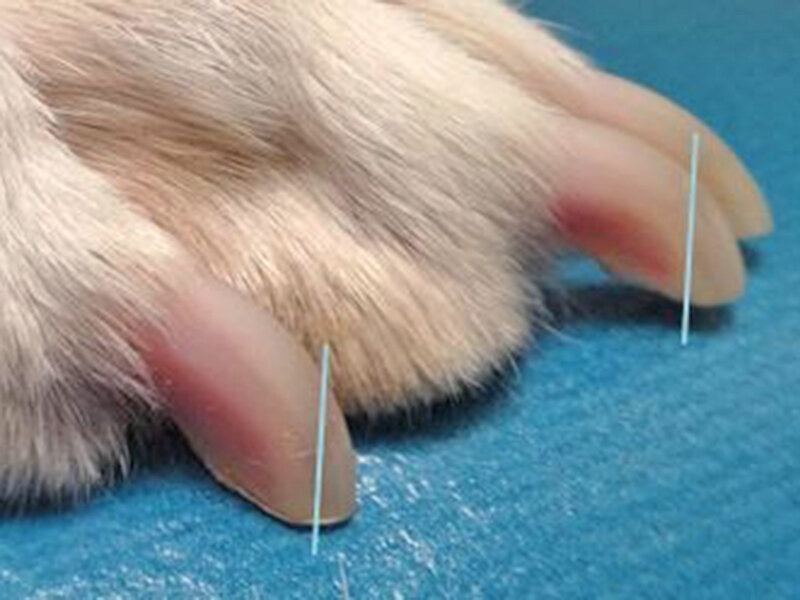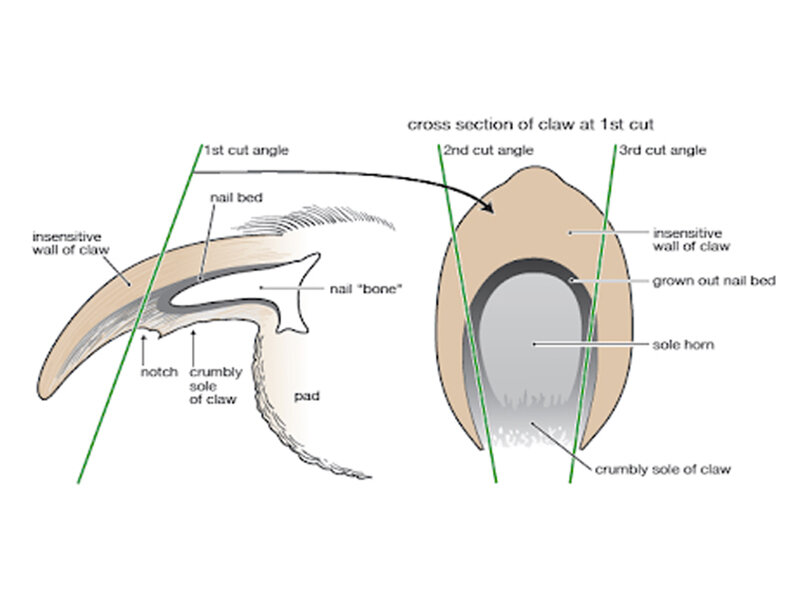puppy nail trimming tips + tricks
why important
Keeping your puppy’s nails short boosts your puppy’s overall well-being; it’s also an investment in your puppy’s future.
Long nails force dogs to have poor posture, making them more prone to soft tissue and bone injuries, nail injuries, and arthritis.
key points
Plan to trim your puppy’s nails at least weekly. Nails need to be trimmed when you can hear those toes tapping on the floor.
If you or your puppy is new to this process, don’t expect to get through all of those nails in one sitting. Instead, plan to do a couple of nails, or just one paw during a single session. For a more sensitive puppy, focus on trimming just one nail at a time.
Your dog has a blood supply in the nail called the “quick.” Just like with us, you don’t want to trim the nail back too far. It can hurt in the moment and might be sore later.
Your puppy should get TONS of treats throughout this process, especially while her paws are being held, or touched with tools. If your puppy is pulling her paws away, stop trimming and go back to focusing on grooming and handling comfort. If you’re struggling to make progress, set up a private session with us to help with nail trimming!
how to trim
When using tools to trim your dog’s nails, making quick and confident cuts is helpful for pups who are new to nail trimming, struggle to sit still, or are feeling nervous about the process.
If you’re new to nail trimming, it can be overwhelming to get started. Here are a few tips to get you feeling comfortable and trimming like a pro in no time.
Always look at the parts you just cut or filed. If you see any pink, you went a little too far—and treats should rain from the sky!
Choose a well-lit area of your house, or wear a headlamp.
Have a second human available to give treats and assist if needed.
Focus on taking off the roof and the sides of the nail, trimming or filing perpendicular to the ground. See pictures.
Your clippers should be sharp enough to remove just small slivers at a time. You’re much more likely to make a mistake and trim too far if you’re taking off large pieces. This is especially important when you can’t see the quick from the outside, as with black nails or previously injured nails.
Practice on macaroni noodles if this is a new skill for you.
the right tools
clippers
Clippers are the most common tool used to trim a dog’s nails. Make sure your clippers are sharp enough. A good pair can be sharpened just like any blade. Miller’s Forge
rotary tool
Using a rotary tool is a great option, especially for large breeds. This includes an extra step of pairing the sound with yummy treats, even before you introduce the sensation of the tool. If your puppy’s afraid of the sound, she’s not ready for you to use this tool on her toenails. Dremel Lite
human nail clippers
Have some of these handy—they’re great to use on very young puppies, small breeds, or dew claws.
hand file
Filing nails with a hand file takes a little longer, but it’s a safer option if you’re worried about hitting your puppy’s quick.
shears
These are very useful, especially if you have a puppy who’ll have a longer coat, or has hair that requires cutting. Sharp, rounded-tip shears made for pet hair are safer and easier to use than your household scissors. Conair brand
styptic powder
Oops! If you accidentally trim those nails too far, your dog may bleed. Have styptic powder nearby and ready to go, but first give your puppy a TON of treats. styptic powder with applicator


